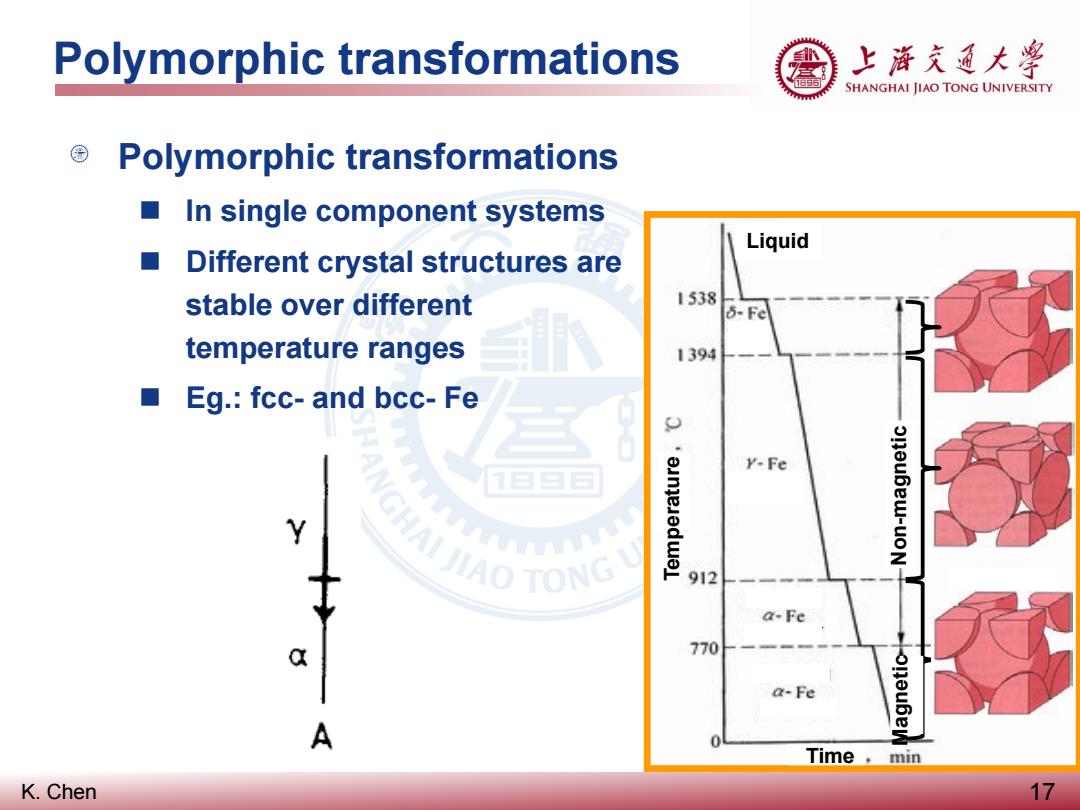
Polymorphic transformations 上游充通大兽 SHANGHAI JIAO TONG UNIVERSITY Polymorphic transformations ■ In single component systems Liquid ■ Different crystal structures are stable over different 1538 -Fe temperature ranges 1394 ■ Eg.:fcc-and bcc-Fe y-Fe AO TONG 912 a-Fe 770 a-Fe A 0 Time min K.Chen 17
K. Chen Polymorphic transformations In single component systems Different crystal structures are stable over different temperature ranges Eg.: fcc- and bcc- Fe Polymorphic transformations 17 Liquid Time Temperature Non-magnetic Magnetic
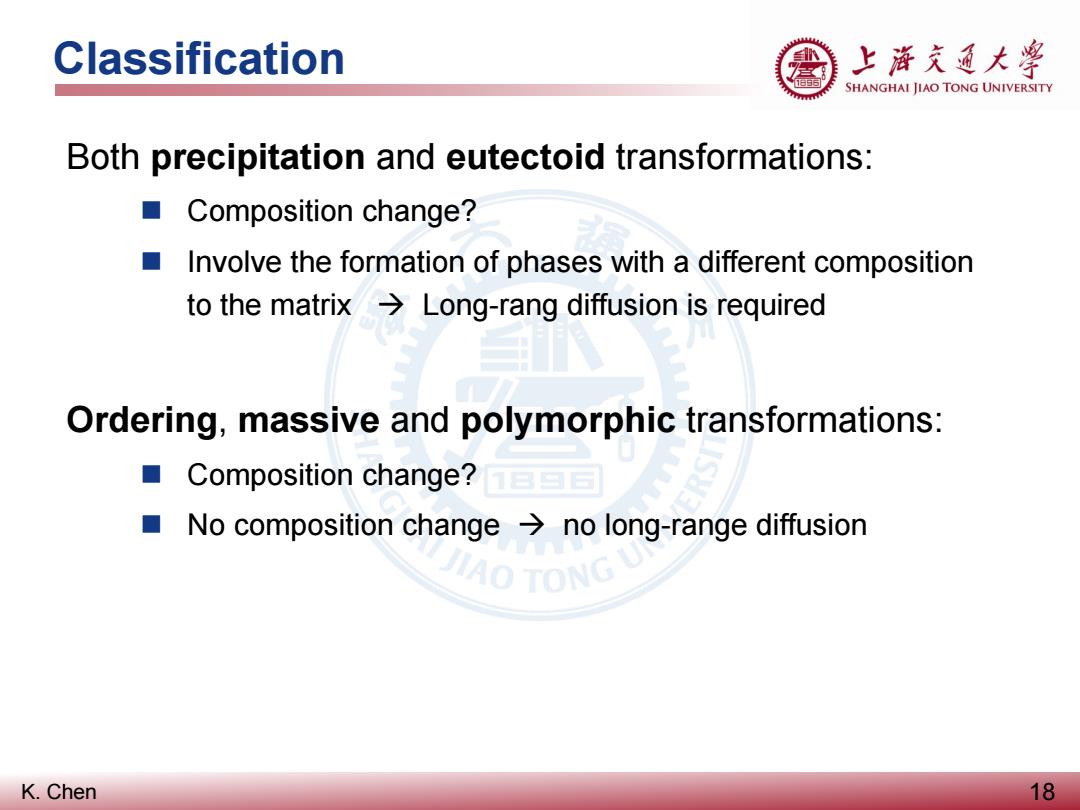
Classification 上浒充通大兽 SHANGHAI JIAO TONG UNIVERSITY Both precipitation and eutectoid transformations: ■ Composition change? ■ Involve the formation of phases with a different composition to the matrix>Long-rang diffusion is required Ordering,massive and polymorphic transformations: ■ Composition change? No composition change no long-range diffusion AO TONG K.Chen 18
K. Chen Classification 18 Ordering, massive and polymorphic transformations: Composition change? No composition change no long-range diffusion Both precipitation and eutectoid transformations: Composition change? Involve the formation of phases with a different composition to the matrix Long-rang diffusion is required
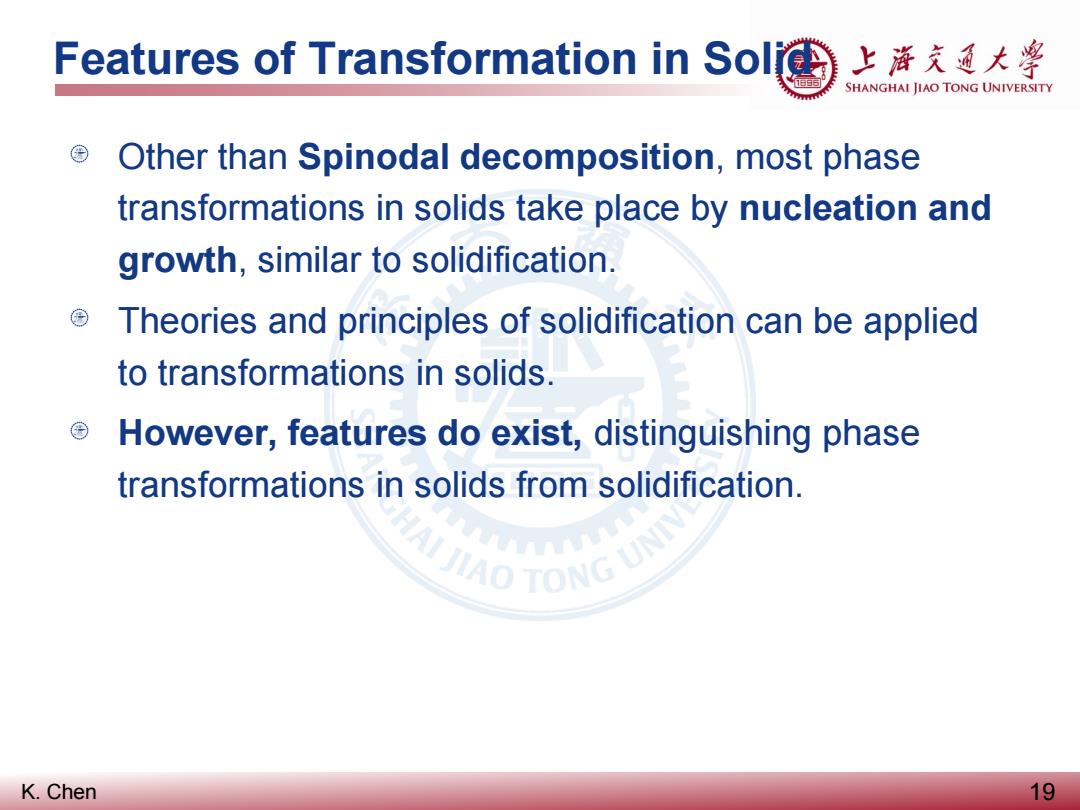
Features of Transformation in Sol 上游充通大警 SHANGHAI JIAO TONG UNIVERSITY Other than Spinodal decomposition,most phase transformations in solids take place by nucleation and growth,similar to solidification. Theories and principles of solidification can be applied to transformations in solids. © However,features do exist,distinguishing phase transformations in solids from solidification. AIJIAO TONG UNI K.Chen 19
K. Chen Other than Spinodal decomposition, most phase transformations in solids take place by nucleation and growth, similar to solidification. Theories and principles of solidification can be applied to transformations in solids. However, features do exist, distinguishing phase transformations in solids from solidification. Features of Transformation in Solid 19
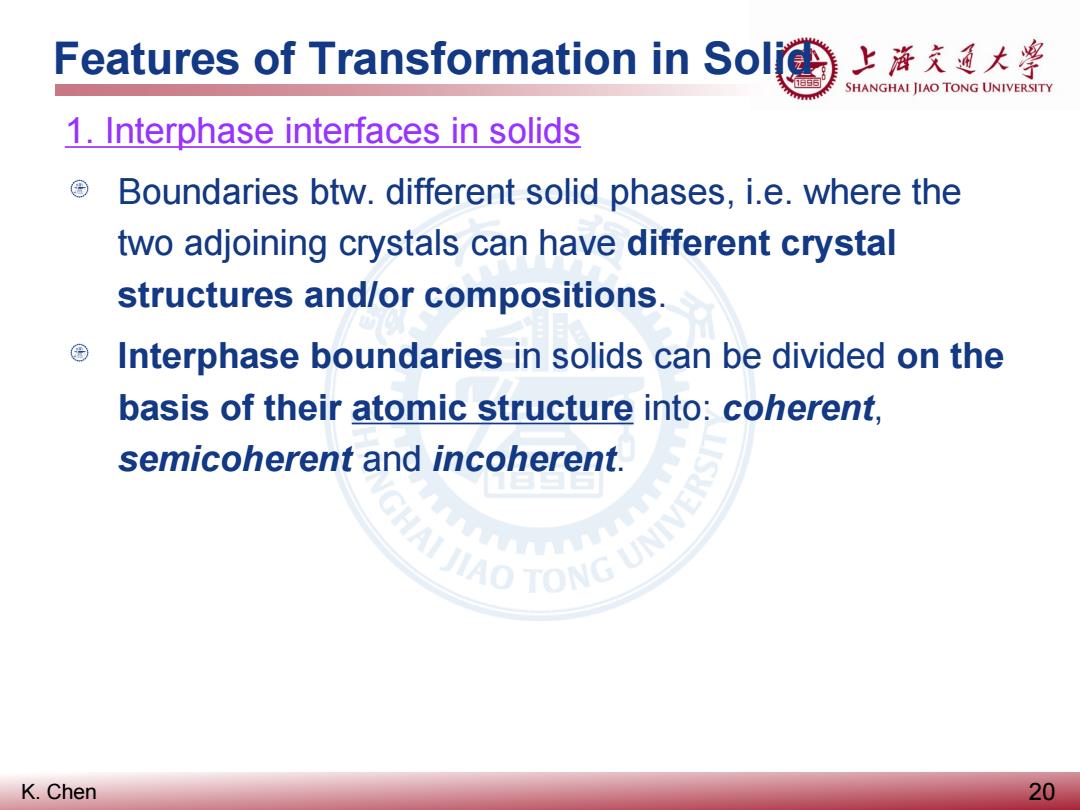
Features of Transformation in Sol 上游充通大警 SHANGHAI JIAO TONG UNIVERSITY 1.Interphase interfaces in solids Boundaries btw.different solid phases,i.e.where the two adjoining crystals can have different crystal structures and/or compositions. Interphase boundaries in solids can be divided on the basis of their atomic structure into:coherent, semicoherent and incoherent. G JIAO TONG UNIV K.Chen 20
K. Chen 1. Interphase interfaces in solids Boundaries btw. different solid phases, i.e. where the two adjoining crystals can have different crystal structures and/or compositions. Interphase boundaries in solids can be divided on the basis of their atomic structure into: coherent, semicoherent and incoherent. Features of Transformation in Solid 20
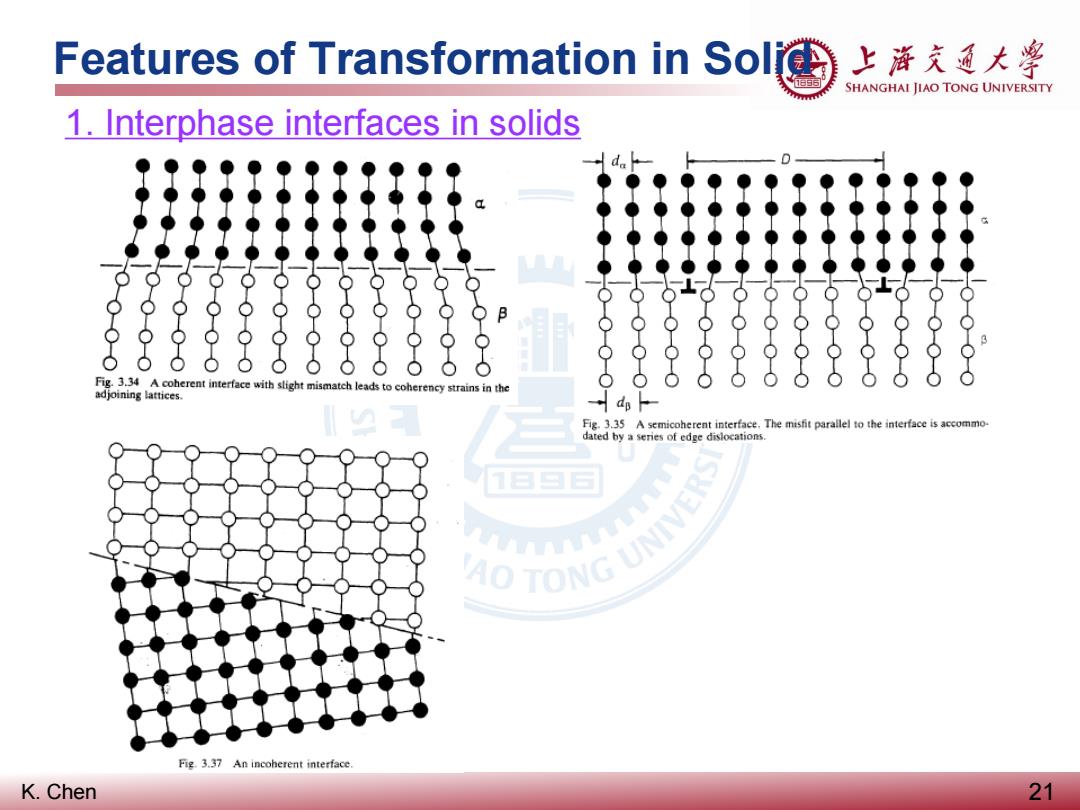
Features of Transformation in Sol 上游充道大粤 SHANGHAI JIAO TONG UNIVERSITY 1.Interphase interfaces in solids Fig.3.34 A coherent interface with slight mismatch leads to coherency strains in the adjoining lattices. dp 22 Fig.3.35 A semicoherent interface.The mishit parallel to the interface is accommo- dated by a series of edge dislocations. AO TONG UNIVE Fig.3.37 An incoherent interface. K.Chen 21
K. Chen 1. Interphase interfaces in solids Features of Transformation in Solid 21